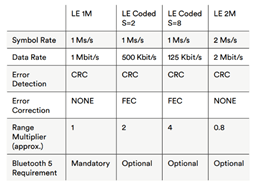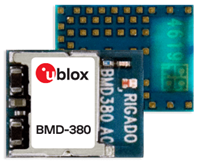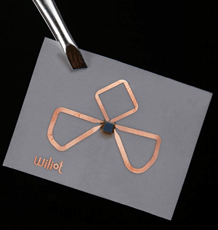Generally speaking, wireless connections make things easier, more flexible, user-friendly, and less costly, as well as allow for scalability. The app market is packed with endless applications supporting hardware devices, and it’s no surprise that it keeps growing.
A lot of apps – or even just hardware in general – use Bluetooth connections to accomplish remote tasks, such as sensing temperature, enabling/disabling hardware light bulbs or locks, controlling toy robots, playing music through a remote speaker, connecting a computer mouse, etc.
Bluetooth 5.2, the latest protocol, was launched in January 2020 and peripheral devices are still catching up to Bluetooth 5.0, launched over three years ago. But it all started with Bluetooth 1.0, a troublesome protocol that had many iterations to go before coming fully integrated into the IoT, the expanding interconnectivity and communication between addressable peripheral and host devices.
The Bluetooth Special Interest Group (SIG) has grown extensively throughout the years, and what started as just a handful of members is now comprised of over 20,000 individuals from all over the world, representing several large and small companies. This is the team that is constantly pushing Bluetooth technology to be faster, more secure, and able to cover more and more distance.
Bluetooth 5 introduced two new physical layers (PHYs), which manage how fast data can be transferred between two connected devices as well as how far the usable range can reach. Bluetooth 5’s new “LE 2M” PHY doubled the speed and its new “LE Coded S=8” PHY quadrupled the range (the S=2 version of LE Coded PHY has a higher data rate than the S=8 but only double range, and this is due to an error-correcting feature that adds redundant bits to packets). See Figure 1 for a table that compares the PHYs.

Figure 1: Comparing the 3 PHYs of Bluetooth 5
The application requirements generally dictate which PHY is used in the protocol stack. For example, Bluetooth connections inside a smart home might warrant a longer range and might not necessarily need fast data rates for simple tasks such as enabling or disabling lights or unlocking a door, whereas wearable health-monitoring devices that log several values a second such as heart rate or oxygen level might require faster data rates but won’t need the long range.
u-blox, an integrator of many wireless technologies such as Bluetooth, cellular, GPS, and Wi-Fi, is a champion when it comes to providing standalone modules running protocol stacks right out of the box. Last year, u-blox acquired Rigado’s Bluetooth module business, which has allowed them to extend even deeper in the wireless technologies field. The great benefit of these standalone modules is that they’re ready for integration with embedded peripheral devices, making the development process of incorporating wireless connectivity accessible to almost anyone.
The BMD-380 by Rigado (shown in Figure 2) is an example of one of these standalone Bluetooth modules and comes as a pre-certified/-tested component running a Bluetooth 5 protocol stack, along with an optimized radio design that includes an antenna with all necessary radio approvals. At the heart of the module is an integrated Nordic Semiconductor nRF52840 Bluetooth Chip, an Arm Cortex M4-based system-on-chip (SoC) running the protocol stack and providing connections to peripherals. The BMD-380 and other Bluetooth 5 modules by Rigado can be found online, along with associated development kits to help you get started with incorporating Bluetooth into your project. What’s more, a wide variety of u-blox modules can also be found online, ranging from cellular and GPS to RF and Wi-Fi technologies.

Figure 2: Rigado’s BMD-380 Bluetooth Module (Image: ublox.com)
Nordic Semiconductor has put its stamp on most Bluetooth modules (like Rigado) offered in today’s market. It’s the leader when it comes to chip-level Bluetooth solutions, and it all comes down to utilizing faster, lower-power, highly capable processing optimized to run the various Bluetooth protocols needed such as Bluetooth 5, Bluetooth Mesh, Thread, Zigbee, and many others.
Most of Nordic’s product line includes hybrid Arm Cortex-based microcontrollers that have been developed specifically for Bluetooth connection, in addition to highly sophisticated adapter power management systems to maximize battery life in portable applications. Priced at just a few bucks, the nRF52 series (as shown in Figure 3) of Bluetooth 5 SoCs can be found online, and as with most embedded processors, several evaluation kits are also offered to assist with benchtop development and testing.

Figure 3: nRF52 series of Bluetooth 5 solutions from Nordic Semiconductor
But what can we expect regarding future Bluetooth features and protocol enhancements? That it’ll continue to get smaller, cheaper, faster? Have more range? Consume less power? Some companies are looking to revolutionize Bluetooth technology entirely. Wiliot, a startup that was recently backed by both Amazon and Samsung, has been developing a super-small, almost-consumable version of Bluetooth in “sticker” form that can be placed on anything, without the need for batteries or cables (see Figure 4).

Figure 4: Wiliot’s nanowatt, battery-free Bluetooth solution
The idea is to scale Bluetooth transceivers down to radio-frequency identification (RFID) tag-like devices. To do this, Wiliot focused on two areas: RF energy harvesting and nanowatt computing. Every day, we’re immersed in a variety of radio waves from cellular, Wi-Fi, and Bluetooth networks. Wiliot has incorporated RF harvesting techniques that exploit these remote energy packets to power its core electronics, including the Bluetooth radio and embedded processor. Although the energy coming through these waves is sporadic, sort of like real waves on a beach, Wiliot has discovered methods of planning and predicting for energy cycles based on consistent transmission and patterns, and designed an on-board energy storage system to deal with these cycles. It seems that just about everyone is connected these days, and each time a person sends a text or posts on social media, it’s a potential energy source for the Wiliot chip. The second part of all this is reducing the power consumption to the nanowatt domain by optimizing computing cycles/tasks and wave packet transmission. It’s interesting to think of what will be generated from companies like Wiliot in the coming years and how it’ll be utilized in the industry.
Ultimately, Bluetooth technology still has a way to go, but it is getting exponentially better each day. What will Bluetooth 10 look like? Will it get that high? Or will it be replaced by something even better? Time will tell, but if Bluetooth technology follows the same trends as everything else in the electronics world, it has an exciting future.

References:
1. Bluetooth SIG. Bluetooth 5: Go Faster. Go Further. [Whitepaper]. Retrieved 2/18/2020 from http://bit.ly/2P5Wrsr.
2. Nordic Semiconductor. nRF52 Series [Product brief]. Retrieved 2/18/2020 from http://bit.ly/3264UB4.
3. Sandre, R. (2019, December 26). Nano-Watt Computing – An Overview [Blog post]. Retrieved from http://bit.ly/37AIE3G.

